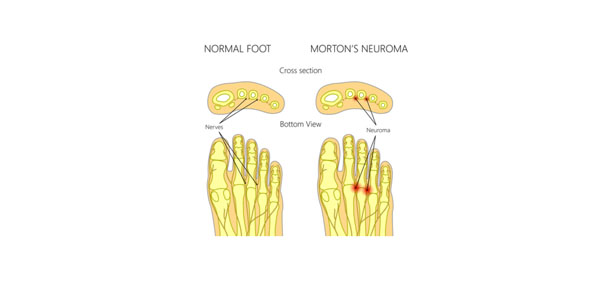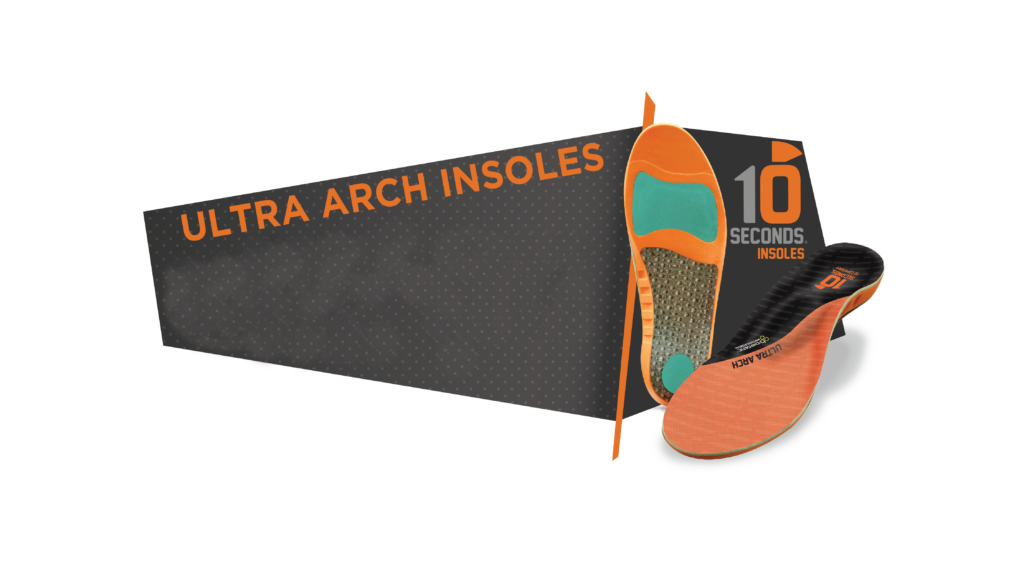Plantar Fasciitis is one of the most common foot conditions and anyone who has this condition has pain with almost every step. Cases range from mild to severe and there are multiple treatment options. Many people have been treated with cortisone shots and tried physical therapy. Some have even resorted to surgery. But before trying drastic treatments you should know that there are other options for plantar fasciitis. Simple, non-invasive home treatment can be very effective and provide long lasting relief. Many cases have healed completely with a few simple lifestyle changes such as better footwear and stretching.
Plantar Fasciitis is a condition that will usually heal on its own if you have patience and will take the time to give it the proper attention and care. Below is more detailed information what you need to know about plantar fasciitis and what you can do to help it heal.
What Is Plantar Fasciitis?
Your plantar fascia is a thick, fibrous sheath or band of tissue that originates in your heel and stretches across your arch in the bottom of your foot, inserting in between your toe bones. When this band becomes inflamed, the painful plantar fasciitis develops. Plantar comes from a Latin word which means “relating to the sole of the foot” and fascia is Latin for “band”. “Itis” relates to inflammation. Very simply, plantar fasciitis is inflammation of the thick, fibrous band on the bottom of your foot (the plantar fascia.)
Plantar fasciitis pain is most severe in the heel. It can also radiate throughout the arch of the foot. This pain is caused by the inflammation of your plantar fascia, which supports your arch. Every time you take a step your plantar fascia is stretched, which is a normal occurrence. However, at times your plantar fascia can become overworked, overstretched, and inflamed. This can cause pain. Sometimes the pain can become so intense that it is difficult to walk.
The pain is usually the worst in the morning when you take your first steps. This is because tissue contracts overnight, and micro healing takes places. When you get out of bed in the morning and take those first steps, your plantar fascia stretches as you place your foot on the floor and this can reverse the healing that has taken place overnight. You may experience a sharp, shooting pain in your heel and then aching or tenderness across the arch of your foot.
How Can Plantar Fasciitis Be Treated?
If you are in intense pain, go see a doctor. If your pain is bearable and you want to try a few home remedies to see if they help, here are some things you could do:
Never go barefoot.
Not even if you get up in the middle of the night to go to the bathroom. Have a slipper or house shoe near your bed and slip it on if you are going to get out of bed. Make sure that whatever shoe you choose is not just a flat slipper. Your slipper or house shoe should support the curve of your arch. My personal favorite is a Halflinger clog with a cork bottom. It has an orthotic foot-bed with an arch support, and the cork/latex combo in the footbed will form to your foot after wearing them for a couple of weeks. The result of this is your own custom orthotic within the shoe. I would estimate that 9 out of 10 people who try on the Haflinger love it. Other good options are the Keen Howser, the Merell Encore, and the New Balance 900. With these three options you may need to add an additional arch support. When choosing a house shoe, make sure to look for something with good support in the arch. Keep your shoes right by your bed and slip them on your feet first thing in the morning before you ever step on the floor. This will help protect the healing that has taken place overnight.
Gently stretch your plantar fascia.
Stretch the planter fascia gently before you get out of bed and a few additional times throughout the day. Always stretch after any period of rest, and especially after icing. Stay consistent – you may need to do this every day for a month or two before you see drastic improvement. Check out our post on The Best Stretches for Plantar Fasciitis for some pointers.
Wear good shoes with good support
Wearing shoes with good support is critical and cannot be stressed enough. Oftentimes plantar fasciitis is caused or aggravated by shoes that are too soft and squishy. (I will not name the brands. But if you can fold your shoe in half or give it a good bend right in the middle it will not help you to heal.) Look for a shoe with a stiff sole. You should not be able to bend the shoe in half or twist it too much. Athletic shoes such as New Balance (preferably model numbers 800 and above) and Brooks have some good options. Some other brands to look for are Alegria, Dansko, and Keen.
Wear orthotics if you need them
Even shoes that have good overall shock absorption and support can be missing the critical supportive curve for the arch area. This is because different feet have different arch curves and different arch heights. It is difficult to accommodate all foot types in one design. When an insert (orthotic) is added to a shoe it can make a huge difference. You will want to make sure to pick the right insole for your arch and shoe. If you need help you may be able to get some advice at a specialty shoe store that sells the product. Or you could try our Insole Advisor which will give a recommendation based on your arch height and shoe type.
Some of the inserts that I have seen the most helpful for plantar fasciitis arecurrexSole Runpro (one of the most popular insoles in Europe), Cadence Insoles (these are a supportive insole which contain a thick visco-polymer to provides cushioning), and the Birkenstock Casual Footbed (which are designed with a rearfoot arch cradle that funnels natural fat tissue back under the heel.) If the occasion comes that you must wear a dress shoe that lacks support, adding the Superfeet Easyfit ¾ Insoles or the FootHealth ¾ Arch Support will be better than no support at all.
Massage your feet
Not only will this help your plantar fascia, it sure does feel good! Don’t be too aggressive, just a gentle massage will do. You could either go in for a professional sports massage or try a self-massage. The best way to do this is to use your thumbs to massage your heel in a circular motion. You can also apply pressure and gently massage your plantar fascia, which stretches from your heel bone to the ball of your foot. You could also use a tennis ball or a Foot Rubz Ball. Make sure you are only applying light to moderate pressure. The point here is to relive pain, not cause more.
Ice
This will reduce inflammation. While you are still experiencing pain, it is good to ice at least once a day, preferable 3 times per day, for 15-20 minutes at a time. If you want to save time and take care of 2 steps at once, try using the “SnOh Frozen Ball,” which is a frozen foot massage ball. (You could also accomplish the same effect by freezing a bottle of water and rolling it under your foot.)
Plantar Fasciitis Socks
These are tight fitting socks that are specific to the left and right foot. They are very tight along the band of the plantar fascia and help to hold it in place. Combined with other treatments these can expedite the healing process. Feetures makes a great plantar fasciitis sock.
Night Sock
The Powerstep Ultra Stretch Night Sock stretches your plantar fascia overnight, which can help provide relief during the daytime hours. Some people find it difficult to sleep with the sock on and prefer wearing it during the day while they are sitting at their desk or watching television.
Stay At It!
We have given some info on what you need to know about plantar fasciitis and the healing process involved with the condition. Here we must note that Plantar fasciitis is a condition that takes time to heal. If you are consistent you should start seeing some relief within a short time. Be aware that in severe cases it could take up to a year for the pain to completely go away. Don’t get discouraged. If you stay at it and do not compromise on treatment it should get better!
Sidenote on Heel Spurs
Oftentimes the foot will develop a heel spur in addition plantar fasciitis. Or does it develop plantar fasciitis in addition to a heel spur? A heel spur is a small bony impingement that grows from the heel in the direction of the plantar fascia. Heel spurs are fairly common, and they rarely cause pain. Keeping this in mind will help you to focus treatment on the entire plantar fascia, which in turn should provide the quickest relief.
Disclaimer: This Website Does Not Provide Medical Advice. The information on this site is not intended or implied to be a substitute for professional medical advice, diagnosis or treatment. All content, including but not limited to text, graphics, images and information, contained on or available through this web site is for general information purposes only. FootHealth makes no representation and assumes no responsibility for the accuracy of information contained on or available through this web site, and such information is subject to change without notice. Confirm any information obtained from or through this web site with other sources, and review all information regarding any medical condition or treatment with your physician. Never disregard professional medical advice or delay seeking medical treatment because of something you have read on or accessed through this website.





Appreciate the recommendation. Let me try it out.
This What You Need to Know About Plantar Fasciitis site has helped me many times in health problems.
I needed to thank you for this good read!! I definitely loved every little bit of it.
I have got you book-marked to check out new stuff you post…